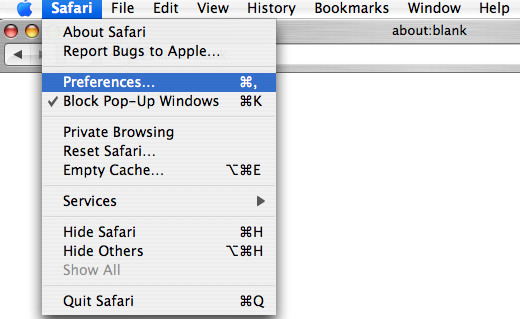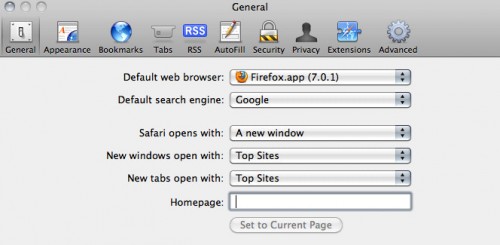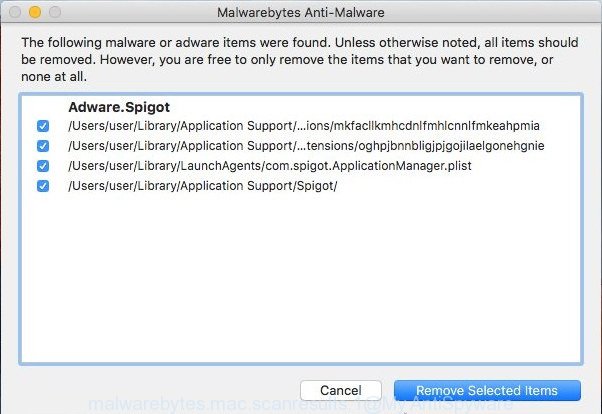LookupTool is a PUP (potentially unwanted program) that belongs to the Adware family. What is Adware? The LookupTool adware can make big problem to your MAC OS. Adware also known as ‘ad-supported’ software is harmful program that shows a lot of adverts in form of popups, coupons, promos or even fake alerts on the computer. Adware can seriously affect your privacy, your computer’s performance and security. Adware can be installed onto your machine without a full disclosure.

Unwanted ads
Another reason why you need to remove the LookupTool adware is its online data-tracking activity. Adware software be able to gather your browsing history and user data, including passwords and credit card numbers. In the future, your privacy information can be used for marketing purposes.
Threat Summary
| Name | LookupTool, Lookup Tool 1.0 app |
| Type | adware software, potentially unwanted application (PUA), popup virus, popup advertisements, pop-ups |
| Symptoms |
|
| Removal | LookupTool removal guide |
How does the LookupTool adware get on your machine
Adware software actively distributed with freeware, as a part of the installer of these programs. Therefore, it is very important, when installing an unknown program even downloaded from well-known or big hosting site, read the Terms of use and the Software license, as well as to choose the Manual, Advanced or Custom setup type. In this method, you can disable the setup of unneeded web-browser add-ons and software and protect your Apple Mac from adware. Do not repeat the mistakes of most users when installing unknown apps, simply press the Next button, and do not read any information which the freeware open them during its installation.
Do not panic because we’ve got the solution. Here’s a tutorial on how to remove undesired LookupTool from the Mozilla Firefox, Google Chrome and Safari and other browsers.
How to Remove LookupTool adware (removal steps)
We can assist you remove LookupTool from your web browsers, without the need to take your MAC system to a professional. Simply follow the removal instructions below if you currently have the intrusive adware on your Apple Mac and want to remove it. If you have any difficulty while trying to get rid of the LookupTool , feel free to ask for our assist in the comment section below. Read this manual carefully, bookmark it or open this page on your smartphone, because you may need to exit your web browser or reboot your MAC system.
To remove LookupTool, execute the steps below:
- Manual LookupTool adware removal
- Automatic Removal of LookupTool
- How to stay safe online
- Finish words
Manual LookupTool adware removal
In most cases, it is possible to manually get rid of LookupTool adware. This solution does not involve the use of any tricks or removal tools. You just need to restore the normal settings of the computer and internet browser. This can be done by following a few simple steps below. If you want to quickly remove LookupTool , as well as perform a full scan of your Apple Mac, we recommend that you use adware removal utilities, which are listed below.
Uninstall PUPs through the Finder
The process of adware removal is generally the same across all versions of Mac operating system. To start with, it’s necessary to check the list of installed programs on your MAC system and remove all unused, unknown and questionable programs.
Open Finder and click “Applications”.

Carefully browse through the list of installed software and remove all questionable and unknown software.
After you have found anything suspicious that may be the LookupTool adware or other potentially unwanted application (PUA), then right click this program and choose “Move to Trash”. Once complete, Empty Trash.
Delete LookupTool adware from Safari
By resetting Safari internet browser you return your web-browser settings to its default state. This is first when troubleshooting problems that might have been caused by LookupTool adware.
Click Safari menu and choose “Preferences”.

It will open the Safari Preferences window. Next, click the “Extensions” tab. Look for unknown and suspicious addons on left panel, select it, then click the “Uninstall” button. Most important to remove all unknown plugins from Safari.
Once complete, click “General” tab. Change the “Default Search Engine” to Google.

Find the “Homepage” and type into textfield “https://www.google.com”.
Remove LookupTool from Mozilla Firefox by resetting web browser settings
If the Firefox web-browser application is hijacked, then resetting its settings can help. The Reset feature is available on all modern version of Firefox. A reset can fix many issues by restoring Firefox settings such as new tab, search provider by default and startpage to their original state. When using the reset feature, your personal information like passwords, bookmarks, browsing history and web form auto-fill data will be saved.
Press the Menu button (looks like three horizontal lines), and click the blue Help icon located at the bottom of the drop down menu similar to the one below.

A small menu will appear, click the “Troubleshooting Information”. On this page, click “Refresh Firefox” button as displayed on the image below.

Follow the onscreen procedure to revert back your Mozilla Firefox browser settings to their default values.
Remove LookupTool from Chrome
Like other modern internet browsers, the Chrome has the ability to reset the settings to their default values and thereby recover the internet browser’s settings such as search provider by default, newtab and home page that have been modified by the LookupTool adware software.

- First, start the Google Chrome and click the Menu icon (icon in the form of three dots).
- It will show the Google Chrome main menu. Select More Tools, then click Extensions.
- You will see the list of installed add-ons. If the list has the add-on labeled with “Installed by enterprise policy” or “Installed by your administrator”, then complete the following guidance: Remove Chrome extensions installed by enterprise policy.
- Now open the Google Chrome menu once again, click the “Settings” menu.
- Next, click “Advanced” link, that located at the bottom of the Settings page.
- On the bottom of the “Advanced settings” page, press the “Reset settings to their original defaults” button.
- The Chrome will display the reset settings prompt as shown on the screen above.
- Confirm the internet browser’s reset by clicking on the “Reset” button.
- To learn more, read the post How to reset Google Chrome settings to default.
Automatic Removal of LookupTool
If you are not expert at MAC system technology, then we suggest to use free removal tools listed below to remove LookupTool adware for good. The automatic method is highly recommended. It has less steps and easier to implement than the manual method. Moreover, it lower risk of system damage. So, the automatic LookupTool removal is a better option.
Run MalwareBytes Anti Malware to remove LookupTool adware software
Delete LookupTool manually is difficult and often the adware software is not fully removed. Therefore, we recommend you to run the MalwareBytes Anti-Malware (MBAM) that are fully clean your Apple Mac. Moreover, this free application will allow you to remove malware, PUPs, toolbars and browser hijacker that your MAC can be infected too.
Download MalwareBytes Anti Malware (MBAM) on your MAC system by clicking on the link below.
20945 downloads
Author: Malwarebytes
Category: Security tools
Update: September 10, 2020
Once the downloading process is done, close all windows on your MAC. Further, open the saved file. Follow the prompts.
The MalwareBytes will automatically run and you can see its main window as displayed below.
Next, press the “Scan Now” button for scanning your computer for the LookupTool adware. A scan can take anywhere from 10 to 30 minutes, depending on the count of files on your computer and the speed of your machine. While the MalwareBytes Free utility is scanning, you can see how many objects it has identified as being affected by malicious software.

After the checking is complete, MalwareBytes Anti-Malware will open a list of detected items. You may remove threats (move to Quarantine) by simply click “Remove Selected Items” button.

The MalwareBytes AntiMalware (MBAM) will delete LookupTool and move the selected threats to the Quarantine.
How to stay safe online
Use an ad blocking utility like AdGuard will protect you from malicious advertisements and content. Moreover, you may find that the AdGuard have an option to protect your privacy and stop phishing and spam web-pages. Additionally, ad blocking software will allow you to avoid unwanted popup ads and unverified links that also a good way to stay safe online.

Please go to the link below to download the latest version of AdGuard for Apple Mac.
3754 downloads
Author: © Adguard
Category: Security tools
Update: January 17, 2018
After the download is done, run the downloaded file. The “Setup Wizard” window will show up on the computer screen.
Follow the prompts. AdGuard will then be installed. A window will show up asking you to confirm that you want to see a quick tutorial. Press “Skip” button to close the window and use the default settings, or click “Get Started” to see an quick instructions which will assist you get to know AdGuard better.
Each time, when you run your MAC OS, AdGuard will run automatically and stop unwanted pop-up ads, block harmful or misleading web-sites.
Finish words
Now your Apple Mac should be clean of the LookupTool adware software. We suggest that you keep AdGuard (to help you stop unwanted pop ups and undesired malicious websites) and MalwareBytes Anti Malware (MBAM) (to periodically scan your MAC for new malicious software, browser hijacker infections and adware). Make sure that you have all the Critical Updates recommended for Mac OS. Without regular updates you WILL NOT be protected when new hijackers, harmful software and adware are released.
If you are still having problems while trying to remove LookupTool ads from your internet browser, then ask for help here.

















